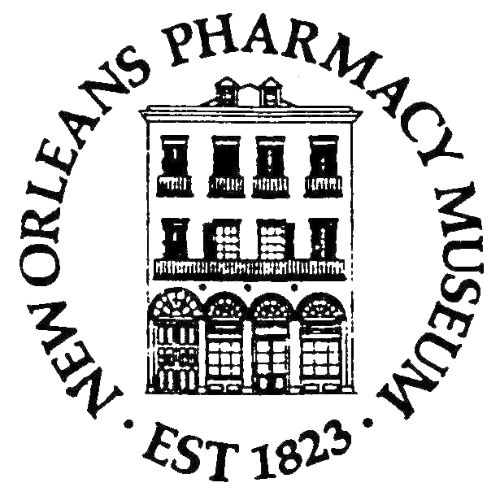FAQ
-
The first licensed pharmacist in the United States, Louis J. Dufilho, Jr., had the building the museum occupies constructed in 1822-1823. He opened an apothecary on the ground floor and lived with his family on the second and third floors until 1855, when he sold the building and business, returned to France, and died soon thereafter.
-
In 1855, Louis Dufilho, Jr., sold his pharmacy and residence to Celestine Pauline Fleitas, wife of Dr. James Dupas. The couple lived on the top floor of the building, the second floor served as the office for Dr. Dupas’ medical practice, and he operated the pharmacy on the ground floor. Dr. Dupas died in 1870. Five years later, his widow sold the building to Peter Boehm, who moved in with his family and opened the Crescent City Paper Warehouse on site. The family lived in the building for many years until it was damaged in a hurricane and sold at the end of the 19th century. The building changed hands several times in the early 20th century. It was finally purchased by the City of New Orleans in 1937, and the museum opened in 1950
-
We have no evidence of poisonings or medical experiments having been conducted on enslaved or otherwise unwilling people in the building the museum now occupies. The stories commonly told by ghost tour guides and podcasters who don’t verify sources are that Dr. Dupas conducted such heinous experiments and murders.
We suspect that the stories told about Dr. James Dupas are based on Dr. James Marion Sims, a 19th century gynecological surgeon hailed as the “father of modern gynecology” who performed non-consensual surgeries on enslaved women in Montgomery, Alabama. Unfortunately, many surgical advancements in the past were made on unwilling subjects. It's devastating to read about what Dr. Sims’ test subjects suffered. However, there is no evidence that Dr. Dupas performed any such surgeries, and the people telling these stories do not have any evidence either. Please ask them to show you their sources!
From the research we have conducted, Dr. James Dupas was born in France in 1810 and came to New Orleans by ship in 1831. He was married to Celestine Pauline Fleitas, who purchased the building the museum now occupies from Louis J. Dufilho, Jr., in 1855. Soon thereafter, the Dupas moved into the third floor, and Dr. Dupas opened an office for his medical practice on the second floor while continuing to run the pharmacy on the ground floor. He and Celestine had four children and were slaveholders. He went to court for stabbing an acquaintance in a brawl. He died of acute diarrhea in New Orleans in late March or early April 1870 at age 60.
-
Yes. The museum has some of the transaction records documenting the purchase and sale of enslaved people by Dufilho, Jr. The people Dufilho, Jr., enslaved would likely have worked in his household but not in the pharmacy, as slaveholders' fears of being poisoned led to the creation of legislation barring enslaved people from working in pharmacies. A three story building that housed the slave quarters, the kitchen, and stables once stood on the right side of the courtyard.
-
Surely. Which historic building in the French Quarter isn’t? This said, we don’t permit paranormal investigations.
-
Items in the collection are all authentic 19th or early to mid 20th century artifacts. However, the only objects that are from the original Dufilho household and pharmacy are the ones in the Legacy of the Dufilho Family exhibit. These were excavated in a dig of the former privy in the courtyard in the 1980s.
The majority of objects in the collection were curated from local pharmacies by Loyola College of Pharmacy staff for the opening of the museum in 1950. For example, the hand carved rosewood cabinets on the ground floor were from a pharmacy on Camp St. called Max Samson’s. Over the years, the collection has been added to through donations by pharmacies, universities, hospitals and private collectors.
-
No reservation is required to visit the museum UNLESS you would like to attend the guided tour or after-hours event. All ticketed tours and events can be booked here.
-
Yes. Please don’t use flash so as not to disturb other visitors.
-
Kids are more than welcome at the museum, but we don’t have any interactive exhibits or exhibits specifically for them. Kids who can read and are tall enough to see into the exhibit cases often find the museum to be a fascinating place.
-
Depends on much you want to read. Most people spend 45 minutes to one hour in the museum.
-
Service animals are welcome in the museum. A service animal, as defined by the Americans with Disabilities Act, is a dog trained to do work or perform specific tasks for a person with a disability. Emotional support animals are not allowed.

